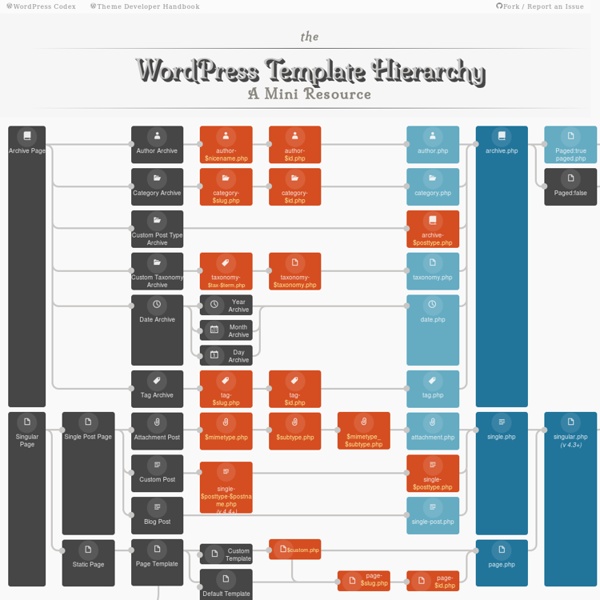The WordPress Template Hierarchy - a mini resource

Retro - Premium Vintage WordPress Theme
Retro Premium WordPress Theme is a combination of a strong vintage design and powerful admin panel. Retro offers full control over site color scheme as well as 5 predefined skins, the fancy Revolution Slider, custom portfolio & testimonials post types, various shortcodes, custom widgets… We have developed 5 awesome predefined skins to help you ease site creation process. Any of them can be used as a start point and changed up to your needs. Feeling not that confident with CSS? With Retro theme you can manage site color scheme right from the Admin Panel. Slider Revolution is a fully developed slide displaying system offering the capability to show images, videos and captions paired with simple, modern and fancy 3D transitions. You can easily build your slides moving slide elements around with a mouse. Now you can change menu appearance just moving logo around! To add a contact form to a page just click on its shortcode button in the Visual mode and start customizing. Dear Customers!
brad parbs · internet rockstar
WordPress Theme for Blue Collar Companies! | ThemeForest Community Forums
I don’t want this to turn into a thread related to just plumbers… I think a theme targeting blue collar type businesses would be able to combine all of them. For example…. They are all service-based businesses. Therefore, a LEAD form within or right below the slider would be of huge importance. Most of them would have a button that says – “Request an Estimate.” Definitely have an hours of operation, a highlight of their service/business, an area to place review sites (such as AngiesList, Yelp, Google, Yahoo, etc…) these companies want their clients to see their reputation online. These are all things some themes do but not really tailored towards a specific niche. As for updates of the theme… Fix bugs but then release another niche every month. So… Who’s going to do it?
bradp/Wolf
Related:
Related:



